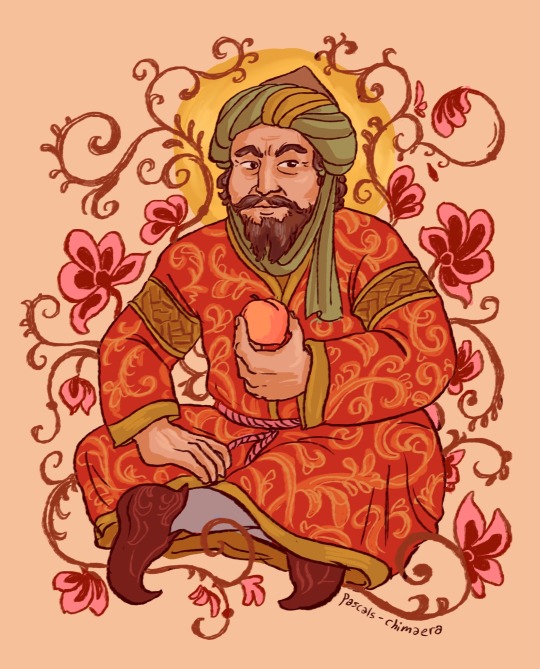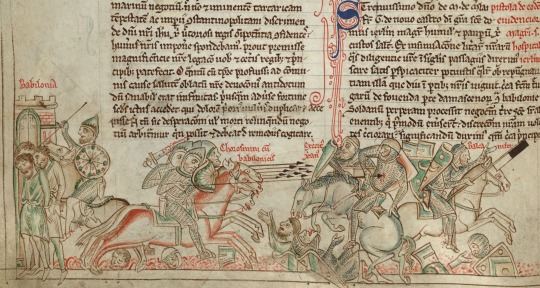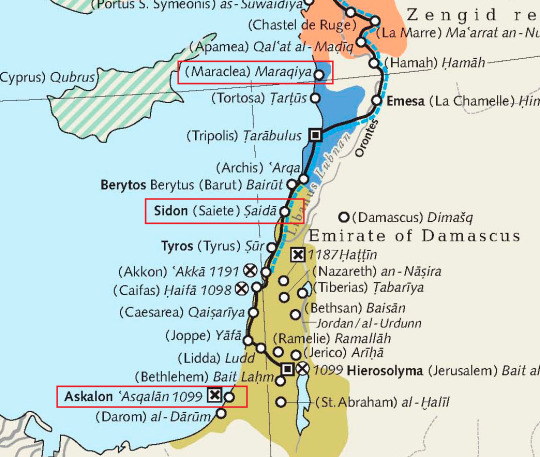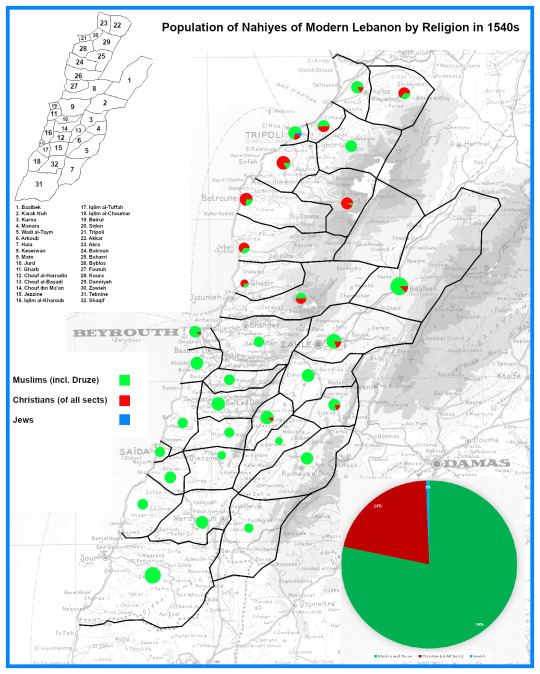#Ayyubid
Text

Tomb of Ayyubid Sultan Saladin in Damascus, Syria
French vintage postcard
#ayyubid sultan saladin#sepia#damascus#photography#saladin#vintage#postkaart#ayyubid#ansichtskarte#ephemera#carte postale#postcard#postal#briefkaart#sultan#photo#tomb#syria#tarjeta#historic#french#postkarte
7 notes
·
View notes
Text





















Kudüs Fatihi Selahaddin Eyyubi, Sedat Inci (2023-)
#narrows eyes#prominent military general sultanate leader and founder of the Ayyubid dynasty Salahuddin Ayyubi?!#anyway I wanted to point out the whole foster son lying subplot here#i'd have two nickels but it's strange that it's happened twice
17 notes
·
View notes
Text

Salah al-Din Yusuf ibn Ayyub, Sultan of Egypt and Syria. known as Saladin to the Franks.
I wrote about my process of making this piece, as well as my inspirations and image sources, on my website blog here
i had an interesting experience researching one of the images I had used as reference, since it turned out to have a different origin than I expected, so I documented my mini rabbithole as well!
#Saladin#Salah al-Din Yusuf ibn Ayyub#12th century#Medieval#Ayyubid dynasty#historical art#History#my art#Blog posts
57 notes
·
View notes
Note
could you please make the Fatima caliphate and the ayyubid dynasty

only did ayyubid sorry 😭 hope u like her though
#essen draws#countryhumans#countryhumans art#countryhumans ayyubid dynasty#how does it feel to be the only person who wants this#(very lighthearted) (she was fun to draw)
12 notes
·
View notes
Text
The slave galleys in Ben Hur are an anachronism. Romans, like most Indo-Europeans, did not use slave rowers, because ships were military and war defines the Indo-European freeman. If they needed slaves to row a warship, they freed them beforehand, rather than have to disgrace themselves by forcing slaves to fight.
No, it was Islam that introduced slave galleys to the Mediterranean—Islam that has a history nearly defined by slave soldiers, from Mamluks to Janissaries to ISIS making brainwashed Yazidi children into suicide bombers.
#salty amateur historian#study ottoman history and i defy you not to feel that vlad the impaler was a bleeding heart liberal#although the mamluks were the fatimids#whose 'not being fucking awful' can be gauged by the fact most of egypt remained christian under their rule#until saladin toppled them and set up the ayyubids#actually yeah it kinda seems like shia islam is a MUCH better thing for non-muslims than sunni#with iran being a major exception#and even then iran was one of two countries that intervened to protect armenians during the azeri invasion a couple years ago
4 notes
·
View notes
Text

Pınar Kaya. Arslanşah ve II. Tuğrul Dönemi Irak Selçukluları tarihi (1161-1194). Doktora tezi (2017) https://www.avetruthbooks.com/2023/10/pinar-kaya-arslansah-ve-ii-tugrul-donemi-irak-selcuklulari-tarihi-1161-1194-doktora-tezi-2017.html
#AbbasidCaliphate#AtabegsofAzerbaijanEldiguzids#AtabegsofFarsSalghurids#AtabegsofMaraghehAqSunqurids#Ayyubids#Bagrationidynasty#Dissertations#KermanSeljukSultanate#Khwarazmshahs#Oghuzs#PınarKaya#SeljukSultanateofIraq#Seljuqids#ShumlaKüştoğanoğluAydoğdu
0 notes
Text
Quick History Lesson

1) Before the modern state of Israel there was the British mandate, Not a Palestinian state.
2) Before the British mandate there was the ottoman empire, Not a Palestinian state.
3) Before the ottoman empire there was the Islamic mamluk sultanate of Egypt, Not a Palestinian state.
4) Before the Islamic mamluk sultanate of Egypt there was the ayyubid dynasty, Not a Palestinian state. Godfrey of bouillon conquered it in 1099.
5) Before the ayyubid dynasty there was the christian kingdom of Jerusalem, Not a Palestinian state.
6) Before the christian kingdom of Jerusalem there was the Fatimid caliphate, Not a Palestinian state.
7) Before the Fatimid caliphate there was the byzantine empire, Not a Palestinian state.
8) Before the byzantine empire there was the Roman empire, Not a Palestinian state.
9) Before the Roman empire there was the hasmonean dynasty, Not a Palestinian state.
10) Before the hasmonean dynasty there was the Seleucid empire,Not a Palestinian state.
11) Before the Seleucid empire there was the empire of Alexander the 3rd of Macedon, Not a Palestinian state.
12) Before the empire of Alexander the 3rd of Macedon there was the Persian empire, Not a Palestinian state.
13) Before the Persian empire there was the Babylonian empire, Not a Palestinian state.
14) Before the Babylonian empire there was the kingdoms of Israel and Judea, Not a Palestinian state.
15) Before the kingdoms of Israel and Judea there was the kingdom of Israel, Not a Palestinian state.
16) Before the kingdom of Israel there was the theocracy of the 12 tribes of Israel, Not a Palestinian state.
17) Before the theocracy of the 12 tribes of Israel there was the individual state of Canaan, Not a Palestinian state.
In fact in this corner of the earth there was everything but a Palestinian state!
438 notes
·
View notes
Photo

Third Crusade
The Third Crusade (1189-1192 CE) was launched to retake Jerusalem after its fall to the Muslim leader Saladin in 1187 CE. The Crusade was led by three European monarchs, hence its other name of 'the Kings' Crusade'. The three leaders were: Frederick I Barbarossa, King of Germany and Holy Roman Emperor (r. 1152-1190 CE), Philip II of France (r. 1180-1223 CE) and Richard I 'the Lionhearted' of England (r. 1189-1199 CE). Despite this pedigree, the campaign was a failure, the Holy City never even being attacked. Along the way, there were some victories, notably the capture of Acre and the battle of Arsuf. Fizzling out with a whimper, the Crusade collapsed because, by the time they arrived at their objective, the western leaders found themselves without sufficient men or resources to resist the still intact armies of Saladin. Although a compromise was negotiated with access for pilgrims to Jerusalem permitted and a Christian foothold maintained in the Middle East, another attempt to take the Holy City would shortly be made the original objective of the Fourth Crusade of 1202-1204 CE.
The Fall of Jerusalem
The Second Crusade (1147-1149 CE) had effectively ended with the complete failure to take Damascus in Syria in 1148 CE. The various Muslim states in the Middle East then realised that the once-feared western knights could be defeated and the precarious existence of the Crusader-held territories, the Latin East, was starkly highlighted. All that was needed now was a unification of Muslim forces and this was provided by one of the greatest of all medieval rulers, Saladin, the Sultan of Egypt and Syria (r. 1174-1193 CE).
Saladin, the founder of the Ayyubid dynasty in Egypt, took control of Damascus in 1174 CE and Aleppo in 1183 CE. Saladin then shocked the world by defeating the army of the Kingdom of Jerusalem and its Latin allies at the Battle of Hattin in 1187 CE. Thus, Saladin was able to take control of such cities as Acre, Tiberias, Caesarea, Nazareth, Jaffa and even, the holiest of holies itself, Jerusalem. Remarkably lenient with his Christian captives compared to the butchery of the First Crusade (1095-1102 CE), after the recapture of Jerusalem almost a century earlier, Saladin accepted ransoms from those Latin Christians who could afford to buy their freedom and enslaved the rest. Eastern Christians were permitted to remain in Jerusalem as a protected minority group. The Latin East had all but collapsed, only Tyre remained in Christian hands, under the command of Conrad of Montferrat, but it would prove a useful foothold for the coming fightback.
Pope Gregory VIII only reigned for a few months in 1187 CE but, in October of that year, he made a lasting impact on history by calling for yet another crusade to win back Jerusalem and such lost holy relics as the True Cross. Nothing less than a repeat of the remarkable feat of the First Crusade would do. No fewer than three monarchs took up the Pope's challenge: the Holy Roman Emperor, Frederick I Barbarossa, king of Germany, Philip II of France and Richard I of England. With these being the three most powerful men in western Europe, the campaign promised much.
Continue reading...
78 notes
·
View notes
Text

Aere Perennius
Chapter Twenty Five: The Battle of Montgisard
TW: War and Violence
“Deus le veult!” The crusaders chanted in unison as they approached the Saracen army in a dauntingly slow, steady march. The foot soldiers formed a strong line behind them, while the crossbow men prepared to fire.
As they approached within an arrows shot of the Ayyubids, the crusaders increased their pace, charging across the battlefield atop their warhorses with their lances lowered and swords raised proudly above their heads. The crossbowmen fired their weapons, bolts shattering enemy shields and armor. They carved through the scrambling infidels, making their ranks crumble like sand.
“For St. George! For Jerusalem! For King Baldwin! ”
Jerusalem has come.
Read more here
This art was made for me by the AMAZING Ionee Beruru. Please follow her on Cara or on Facebook.
--
If you like my story please please consider supporting organizations like Doctors Without Borders and the Palestine Children’s Relief Fund.
#baldwin iv#kingdom of heaven#king baldwin iv#koh#leper king#aere perennius#baldwin iv x original character#fan fiction#fanfic#koh fanfic#kingdom of heaven fanfic#kingdom of heaven fan fiction#the battle of montgisard
94 notes
·
View notes
Text
The Sultan, they said, was a good man. Soft, quickly moved to tears. Out of compassion, he bought the freedom of a Christian woman's stolen daughter. Even Walther von der Vogelweide, the minnesinger in distant Germany, praised the "mildness" of the powerful ruler in the Orient, whose name has a good reputation in the West: Saladin, a righteous man.
He was a man who always kept his word, even to his enemies.
He let his subjects drag him to court, because God's laws applied equally to everyone. Also for him, the ruler who managed to do what no one had ever managed before: to unite the Islamic world of the Middle East after centuries of discord and to wrest Jerusalem, the holy city of the Muslims, from the Christians in 1187.
His name translates as "righteousness of faith", and Saladin is indeed a devout Muslim. Nevertheless, after his conquest of the Holy Land, he allowed the Christians and Jews there to continue praying to their God. This is another reason why, more than half a millennium later, Western Enlightenment thinkers would make him the epitome of the tolerant ruler.
But this al-Malik an-Nasir Salah ad-Din Abu'l-Muzaffer Yusuf ibn Ayyub ibn Shadi, known as Saladin for short, also had other sides.
He could be treacherous, vile and mean. He did not shy away from murder. Nevertheless, this man fascinated his contemporaries. He became one of the most revered rulers of the Islamic world and the most important opponent of the Crusaders.
Saladin was born in 1138 in Tikrit (in present-day Iraq), the son of a Kurdish officer. During his political career, Saladin was the first to bring Egypt's army under his control.
Saladin, a Sunni, now founds two universities where theology is taught according to Sunni theology - a signal that he is on the side of the population. He also abolished a number of taxes that contradicted the Koran and the teachings of the Prophet.
Saladin's subsequent conquests shock the Christian world. By 1174, his power extended from North Africa to the southern tip of the Arabian Peninsula. In 1186, he ruled from the Nile to the Tigris.
At the height of his power, the Sultan even dreamed of taking the Holy War to Europe, conquering Rome - and putting the Pope in chains.
The Crusaders conquered Jerusalem in 1099 and held it until Saladin besieged it in 1187 and handed it over to the Ayyubid dynasty, a Muslim sultanate that ruled the Middle East at the beginning of the 12th century.
Saladin wanted to recapture the city, which had previously been ruled by Muslims.
For Muslims, Jerusalem is a place where important events in the life of Jesus and other important personalities took place. It is also the place where the Prophet Mohammed ascended to heaven according to the traditional interpretation of the Koran and other texts.
In Sunni Islam, Jerusalem is the third holiest city after Mecca and Medina. Muslims believe that Muhammad was brought to Jerusalem during his night journey (Isra and Mi'raj).
The name Jesus is mentioned twenty-five times in the Holy Qur'an, often in the form 'Isa ibn Maryam, which means "Jesus, son of Mary". In the Quran, he is given the unique title "Messiah" (al-masih in Arabic), which means "anointed one". He is considered one of many prophets from the lineage of the Prophet Ibrahim, or Abraham (peace be upon him). Many Muslim traditions regard it as an ideal example of spirituality. Unlike Christians, who generally believe in a triune God, Muslims believe that Jesus was a great prophet who was to lead mankind on the straight path of monotheism and obedience to God (Allah).
When Jerusalem also fell, two kings and an emperor set off for the Holy Land with their armies from 1189 onwards. One of the monarchs is King Richard I of England. Even before the armed pilgrimage, he had already earned himself an honourable name: "Lionheart."
Saladin lies in wait for the Christians in the forests of Arsuf near the Mediterranean coast. But King Richard of England had anticipated the attack; on 7 September 1191, his troops won a clear victory. Nevertheless, the Muslim army is still strong enough to block the road to Jerusalem.
Saladin's reconquest of Jerusalem in 1187 prompted Pope Gregory VIII to organize the Third Crusade. From 1189 to 1192, Saladin lost Acre and Jaffa and was defeated in the field at Arsūf. The Crusaders retreated to Europe without seizing Jerusalem, but Saladin's military reputation had been damaged. He died in 1193.
#learn about history#studyblr#religion#religious studies#crusaders#history#oriental#history of crusade#Saladin#king baldwin iv#kingdom of heaven#history of Jerusalem#Islam#christianity#history of Religion#teaching#books#booklr
88 notes
·
View notes
Text
The Battle of Forbie
As you may have noticed, I am not a proponent of any portmanteau names for Alex and Nigel. Call me weird, but none of them please me, so I will continue to abstain from using them.
HOWEVER
In a spirit of generosity, I have come here today to feed the Forbie enjoyers. I give you:
The actual Battle of Forbie

The Battle of Forbie, also known as the Battle of La Forbie or the Battle of Hiribya, was fought October 17, 1244 – October 18, 1244 between the allied armies (drawn from the Kingdom of Jerusalem, the crusading orders, the breakaway Ayyubids of Damascus, Homs, and Kerak) and the Egyptian army of the Ayyubid Sultan as-Salih Ayyub, reinforced with Khwarezmian mercenaries. The resulting Ayyubid victory led to the call for the Seventh Crusade and marked the collapse of Christian power in the Holy Land.
The capture of Jerusalem by the Khwarezmians in August had caused great alarm among both the Christian and the Muslim states. Al-Mansur, the Emir of Homs and an-Nasir Dawud, ruling Kerak, joined the Templars, the Hospitallers, the Teutonic Knights, the Order of Saint Lazarus, and the remaining forces of the Kingdom of Jerusalem to take the field against the Egyptian Sultanate.
The two armies met near Forbie, a small village northeast of Gaza. Over 5,000 Crusaders died. 800 prisoners were taken. Of the troops of the knightly orders, only 36 of 348 Templars, 26 of 351 Hospitallers, and 3 of 400 Teutonic Knights survived.
Hiribya (Forbie) - not appearing on this map. I highlighted Ascalon, as Forbie was nearby.

I have also taken the opportunity to highlight Sidon and Maraclea for those who aren't already familiar with the locations. It's worth reiterating that despite the way the movie uses Maraclea as a personal name to refer to the person involved, the story itself is about a lady OF Maraclea and a Templar knight or lord of Sidon.
Ever since @currentlyonstandbi speculated about it, I have solidly embraced the head canon that perhaps the original story was actually about two men, past lives of Alex and Nigel, but the story was later changed to a man and a woman due to homophobic pressure. After all, the skull symbolism of this story is reportedly part of the accusations made against the Templars for "head worship"-- the veneration of skulls as idols in violation of the precepts of the Church. The other major charges laid against the Templars? Homosexuality and sodomy.
Was any of this intended by Greg? Of course not. That man blindly stumbled through this script running on fumes from half-remembered random articles and vague conceptions gleaned from the shallow pop culture portrayals of occult societies that were plentiful at the time. But it fits together well in a way that feels satisfying and with reasonable internal consistency.
Imagine two Templar knights who fall in forbidden love while fighting in the Holy Land. The tragic death of his lover drives the other mad with grief and leads him into dark acts of desperation. Their story gives rise to a potent myth that Nigel reads 700 years later. The myth calls to them with familiarity, directs their fate, and leads them to the same tragic outcome.
(Excuse me while I sob on the floor for the next 5 hours.)
A Few Key Dates for Context:
1209 - Massacre of the Cathars at Beziers (Kill them all; God will recognize his own.)
1244 - Battle of Forbie
1307 - Downfall of the Templars, under accusations of heresy and homosexuality/sodomy.
1300s - Playing cards arrive in Europe. There is speculation that the cards were adopted from the Egyptian Mamluks by the Crusaders in the Holy Land who then brought them home to Europe.
That concludes today's unhinged lesson in the power of random Google searches and paying close attention to the history of certain tags on Tumblr. I'm still not gonna use #forbie, but I can at least enjoy the strange coincidence here.

Like Minds Masterpost
#i was overdue for a substantive post anyway#look only 7 people will care about this but i AM rather proud of chasing this down#the only time i'm gonna use this tag:#forbie#like minds#nigel colbie#alex forbes#nigel colbie x alex forbes#murderous intent#like minds 2006#murder boyfriends
33 notes
·
View notes
Photo

Religious Distribution in the Subdivisions (Nahiyas) of the Mount Lebanon Emirate in the 1540s according to Ottoman Tax Registries.
by u/R120Tunisia:
The map wasn't made by me. The original post is here though I modified it by adding a small graph that shows the overall percentages below.
The map uses various books that summarize the results of the tax registries as a source.
In case you might be wondering : "Wasn't Lebanon Christian majority ?" well at that point, no. The largest religious group at the time would have been the Druze followed by Shias. Note the Druze were technically part of the Muslim millet and didn't pay the Jizya so they were included in the Muslim category at the time.
The Druze though were far from united. They originated from the foothills of the Anti-Lebanon Mountains and were settled by the Ayyubids and Mamluks over the years along the central Levantine coast to guard from Crusader naval incursions and raids. In the absence of crusader threats, the various Druze clans started to fight among each other, with a divide appearing between Qaysi Druze clans (who claimed descent from Northern Arabian tribes) and Yamani Druze clans (who claimed descent from Southern Arabian tribes). The former were supported by local Sunnis and Shias while the latter had the support of local Ottoman authorities.
The Qaysis eventually gained the upper hand following the Battle of Ain Dara and most of the Yamani Druze were expelled from Lebanon with most moving into what is today Jabal al-Druze which was sparsely populated at the time (this was how Syria got most of its Druze as well). Meanwhile, the Qaysi clans that prevailed started to invite Christian peasants from the Mt Lebanon area as well as from all over the Levant into the area to repopulate the towns and villages left empty by the Yamanis and to become tenant farmers under them. These new immigrants were mainly Maronite but also Orthodox and Melkite to a lesser degree.
This Christian immigration would increase following the takeover of the Shihab dynasty, a Sunni family from the Anti-Lebanon Mountains, following the death of the last Druze Qaysi Ma'nid Emirs. The new dynasty were in frequent conflict with Druze landlords so to build a power base in the area they started to support the Maronite clergy and created local conditions friendly to Christian life (some Shihab Emirs would even convert to Christianity).
And finally two other factors : Christians tended to be poorer and rural (especially Maronites), and the rural poor tend to have higher birthrates, and at the time, there was a split among the local Orthodox population of the Levant that caused many to join the new Melkite Catholic Church leading to many members leaving their communities for sectarian reasons and moving into Lebanon to create new communities out of scratch (most notables of these is Zahlé, Lebanon's third largest city and the largest Christian majority town in the Middle East, which continues to have a Melkite majority to this day).
Tl;dr : in the late 17th and early 18th century following inter-Druze conflict and the takeover of the Shihab dynasty, a demographic shift occurred in what is today Lebanon that led to a huge decrease in the Druze population and an increase of the Christian population due to immigration (to re-populate areas emptied by the Druze who left and trigged by both the local conditions in the area as well as theological disputes within the Christian communities of the Levant) as well as higher birthrates, eventually leading to Christians becoming a slight majority in the area.
59 notes
·
View notes
Text

Casket, late 1100s–1200s, Syria (Raqqa), Ayyubid Period. Fritware with molded design under glaze.
Courtesy Alain Truong
11 notes
·
View notes
Text

i drew rhe Ayyubid bros for Burger King universe….they rent out properties for concerts and are always arguing about budget
15 notes
·
View notes
Note
You've said before that the Islamic Repubic of Iran is controversial within Shi'a Islam because there's not really supposed to be a Shi'a state, or something like that. Do you know what the stance is on historical Shi'a states like the Fatimi Caliphate in Egypt or the Savafid Empire in Iran?
It's important to understand that the Safavid Empire was a monarchy with Twelver Shi'ism as its official religion, while the Fatimid Empire was a Sevener/Ismaili Shi'a caliphate/imamate, so there are various rules to how an Islamic state can be imposed under these conditions.
For Twelvers, we don't have an Imam present at the moment; Twelvers believe he is in occultation (=Gheybah). This led to a debate regarding the establishment of an Islamic government whilst the Imam is in occultation. While the concept is not new, there has been various ideas, thus leading to strong debate within the scholarly institutions in Qum and Najaf. What S.Khomeini introduced was based on a theory, which holds that through a jurist, they can maintain religious, political and social order. This proved to be hignly controversial idea, because many grand Shi'i scholars were opposed to the establishment of an Islamic state, because of the lack of an Infallible Imam, leading to friction within the Twelver community. Indeed, the best example of anti-Iranian sentiment among Shi'a Muslims can be found in Iraq, which has long attempted to push away the growing Iranian influence in their religious and political affairs especially during the post-iraqi war era. In fact, even the greatest of scholars, Ayatollah Sayed Ali al-Sistani (r.a) remains neutral regarding the establishment of an Islamic republic/state and is a supporter of free democratic elections. The Safavid Empire was still a monarchy and couldn't be called an Islamic state in the same sense as the Ottoman Empire was a monarchy, since a real Islamic state can only be imposed by a divinely ordained Imam. I will not get into the Zaidiyya Shi'as (Fivers) as their theology differ significantly from Twelvers and Seveners.
The Ismailiyyas (or later the Tayyibi Ismailiyyas) differed from the Twelvers in the sense that they had a living Imam and was able to overthrow the Abassids in the Maghrebi region, thus being able to establish an Imamate under a divinely ordained system. However, this Imamate was shortlived as intra-religious feuds occured regarding the successorship of various caliphs, causing the Fatimid to weaken. The Ayyubid general Salah ad-deen took this as an opportunity and overthrew the Ismailiyya Fatimids. There are two remaining sub-branches of Ismaili Shi'ism, the Musta'alis and the Nizaris. While the Musta'alis do not have an Imam at present (the Da'is being their representatives instead), the Nizaris have a living Imam.
43 notes
·
View notes
Text
Kemal Taşçı. Selçuklular zamanında Van Gölü havzası (1018-1243). Doktora tezi (2013)

Kemal Taşçı. Selçuklular zamanında Van Gölü havzası (1018-1243). Doktora tezi (2013) https://www.avetruthbooks.com/2023/09/kemal-tasci-selcuklular-zamaninda-van-golu-havzasi-1018-1243-doktora-tezi-2013.html?feed_id=17550
#History#AbbasidCaliphate#AtabegsofAzerbaijanEldiguzids#Ayyubids#BattleofManzikert#Dissertations#Hamdaniddynasty#HistoryofAzerbaijan#Ilkhanids#KemalTaşçı#Khwarazmshahs#MarwanidsDustakids#RashidunCaliphate#Sajiddynasty#SeljukSultanateofRum#Seljuqids#Sökmenliler#UmayyadCaliphate
0 notes